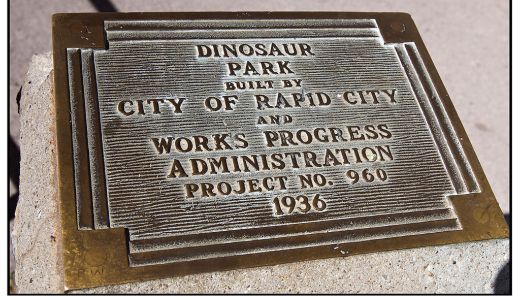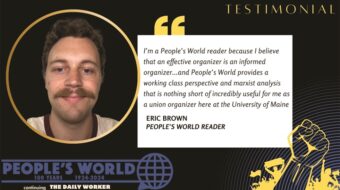
April 8 marked the 75th anniversary of the Works Progress Administration, the largest federal jobs program in U.S. history and the most famous program of the New Deal of President Franklin Delano Roosevelt.
During its existence from 1935 to 1943, the WPA employed over 8.5 million victims of the Great Depression in public works projects, large and small, in every corner of the country.
The struggle to create the program had an eerie similarity to the recent fight for health care reform.
The bill establishing the WPA easily passed the House of Representatives, but faced fierce opposition from Senate Republicans howling “socialism” and Southern Dixiecrats opposed to any program helping African Americans, who suffered unemployment at nearly twice the rate of whites.
The right wing also fought the WPA because they saw it as consolidating Roosevelt’s voter base.
The WPA became the largest employer in the country and workers received prevailing wages and benefits. Many were organized in the newly legalized labor movement.
While opponents screamed that WPA projects were “make-work” and “boondoggles,” the achievements of the WPA are legendary and remain treasures of our democratic heritage.
They also created a huge demand for steel, fuel, construction materials and consumer goods and got the Depression-wracked private economy moving again.
Under the WPA, construction of the 469-mile Blue Ridge Parkway in North Carolina and Virginia began.
The 69-mile Merritt Parkway in Connecticut and the 127-mile Key West Overseas Highway were built.
In New York City the WPA built the Triborough Bridge, Lincoln Tunnel, Central Park Zoo and LaGuardia Airport.
The WPA built numerous sports facilities including the Orange Bowl in Miami, and many public buildings including the Oregon State Capitol, the Tennessee Supreme Court building, the Kansas City city hall and the Oklahoma City municipal auditorium.
All told, WPA workers produced 650,000 miles of roads, and built or improved 124,000 bridges, 800 airports and 125,000 public buildings, including schools, hospitals and post offices as well as parks, fairgrounds, and rural electrification and sanitation systems.
The WPA Federal Artists Project employed thousands of artists, writers and musicians, who produced over 10,000 arts projects. Many of these projects were murals that beautified post offices and other public buildings, and those that remain are considered national treasures today.
“Government has a final responsibility for the welfare of its citizens,” President Roosevelt told Congress in his annual message in 1938. “If private cooperative effort fails to provide work for willing hands and relief for the unfortunate, those suffering hardship through no fault of their own have a right to call upon the government for aid. And a government worthy of the name must make a fitting response.”
In today’s crisis there are 20 million Americans desperately in need of full-time work. Just as during the Great Depression, the private sector will not and cannot produce the jobs needed to rebuild our nation’s crumbling infrastructure, launch the needed new green energy projects and breathe new life into our nation’s economy. There is simply no market. Working people have been impoverished and cannot buy the goods and services to revitalize the nation. Further, there are not sufficient profit margins to motivate the private sector to shift and take up these badly needed projects.
Marking the 75th anniversary of the WPA, Jobs for America Now, the 60-member coalition launched by the AFL-CIO, called for all-out support of HR 4812, the $100 billion Jobs for Main Street bill to assist local government and school districts. The bill, written by California Congressman George Miller, has just over 100 co-sponsors and aims to create or save 1 million jobs. While it is the most ambitious jobs bill so far, it only begins to address the unemployment problem. Ultimately the only solution is massive, direct employment by the federal government – a new WPA.
Photo: http://www.flickr.com/photos/swanksalot/ / CC BY-SA 2.0












Comments